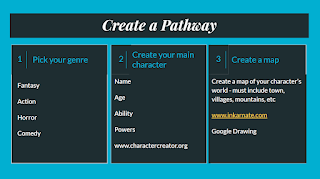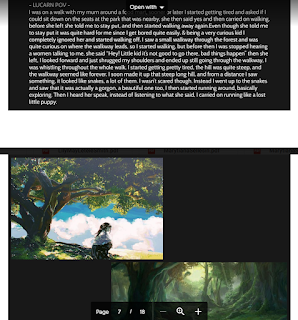The NCEA Level 1 standards are slated to roll out in 2024. After the initial introduction in 2021, the English Department has started to unpack the new NCEA Level 1 assessments. The notable change is that our Level 1 English program will now consist of 2 internal assessments (worth 5 credits each) and 2 external assessments (worth 5 credits each). Currently our NCEA Level 1 English students are offered 4 internal assessments (12 credits total) and 3 external assessments (12 credits total). In addition to this, our Level 1 students are also offered NCEA Level 1 English credits when they are in Year 10 through 2 internal assessments (10 credits total). The new changes to the NCEA structure and in particular, the NCEA Level 1 English structure, focuses on three Big ideas which are:
Engaging with text is a source of enjoyment and enrichment
Language and identity are inextricable
Making or creating meaning is an active process that occurs when we interpret or produce text
The new assessments for NCEA Level 1 English allow for our students to deep dive and explore texts, create meaning in and through texts and enables students to craft texts through multi models. You can read more about the Big Ideas and the changes to NCEA Level 1 English here - NCEA Education - English - I have also written a reflection on our department's first response to the changes to NCEA here - Alby's Blog Entry: 16/05/22 . At our recent TOD, as a department we dedicated time to unpack and understand one of the new NCEA Level 1 English internal assessments. We wanted to use the time, before the changes kick into gear, to get familiar with the assessments. We decided to start with 1.2 [91925] - Create a verbal and visual personal response to an independently studied text. With unpacking the assessment, I thought that we could focus on five areas (to bring focus to the unpacking and analysis). These areas are:
What is the assessment?
What are the key words/concepts of the assessment?
What are the opportunities with this assessment?
What are the potential barriers for kaiako with this assessment?
What are our next steps?
Below is the Department's responses to each area. I wanted to document and reflect on this as I believe that it will help us prepare and plan for the new changes to NCEA in 2024.
 |
| Mr Spruyt sharing the character analysis presentations his Level 1 class did in Term 2 |
 |
| Connecting what we are currently doing + applying it to the new NCEA Level 1 English standard (1.2) |
1) What is the assessment? Understanding the premise of the assessment.
- Verbal + Visual response to a text
- Similar to the Connections + Reading Responses assessment that we offer in Year 10.
- The student is required to create a verbal and/or visual response to a independently chosen text
- The response is based on the student’s understanding on the key elements in the text - whether it be character, setting, theme, conflict in the text, key relationships, symbolism, language etc.
Summary: Currently we offer two Level 1 internal assessments to our Year 10 students - 90852 (Explain significant connection(s) across texts) and 90854 (Form personal responses to independently read texts). . Both assessments align with this new standard in that students have to study and analyze a text. The difference is that the student's response to the text can be presented through different multi models. Currently they are producing a written report for the texts that they have studied. With this new assessment the students can present their analysis through visual mediums such as Google presentations etc. Also with this new assessment, there is an emphasis on verbal component - so the student has to verbally show an understanding of the text. We like the idea of exploring the different elements of a text - such as character, relationships within the text, symbolism and language. With the current assessments, there is a huge focus on theme and understanding how the text connects to the theme. There is a little bit more freedom to deep dive into the text(s).
2) What are the key words and concepts of the assessment? Understanding and unpacking the language of the assessment.
- Speech (assisted by a slide show)
- Monologue
- Multi-model
- Could be an audio/video
- Static image with an explanation
- Creative freedom
- Must have a verbal component
- choosing a text, and appropriate aspect(s) of the text to focus your response
- checking with your teacher regarding your choice of text and aspect(s)
- making connections between the world of the text and your own world
- selecting the best mode for your presentation: for example, a comic strip, slideshow, oral presentation (must include visual component), seminar, Prezi, zine, YouTube clip, TED talk, vlog
- checking with your teacher that your presentation mode includes both verbal and visual components
- drafting your presentation
- seeking feedback from your teacher
- crafting and submitting your presentation.
- Focusing on a character's experience
- Focusing on an issue, problem or idea
- Focusing on elements of the setting
- Focusing on a conflict
- Focusing on how language is used
- Focusing on a significant event
- Focusing on a relationship.
Summary: The key concept that stood out for our department was 'multi model'. We spend a large portion of our teaching time teaching students how to craft a text. This new standard allows our students to have a bit more creative freedom to explore different models such as comic strips, slide shows and vlogs. We currently use these visual tools but we do not assess them as they do not fit the assessment criteria for NCEA Level 1 English. We are excited that we are able to incorporate these visual tools into our teaching and learning as the students really enjoy using them. We are hoping that they will engage with the learning more as we are able to use (and assess) visual tools that they not only use but use really well.
3) What are the opportunities with this assessment?
What are the different modes of presentation (Current presentation models that we can implement into the standard):
- Written reports
- Connections Report
- Static Image
- Reading Responses
- Use of Google Slides, Book Creator + Canva
Students can create:
- Static Image - (with a written explanation - a personal response - a reflection about the piece of work, show knowledge of the text and their own reaction to it)
- Google Slide Deck
- Book Creator
- Text Review
Texts:
- Novel
- Film
- Fan fiction
- Possible move away from the novel
- Pasifika/Maori narratives (short/extended)
- Short films
- Newspaper articles
- Short stories
- Speeches
- Songs/Poetry/Albums
- Podcasts
Potential roll out of the assessment (how we see it in our classrooms)
- Study an independently chosen text (teacher to provide 4 texts)
- Spend 4 weeks studying 4 texts
- Teacher to guide student selecting the texts
- Go through different text analysis with the students (character/setting/language)
- Go through the multi model with the students.
- Trial the assessment with our Year 10 cohort in 2023
Summary: The opportunities with this assessment are exciting. We spent time sharing what we are currently doing with character analysis (for a text study) and how some of us are using Google Slide Deck with presenting character analysis. Some of our team use Book Creator and shared how students have used this in a meaningful way in addition to the text study. There are already some good practice with visual tools and the purpose of sharing this with each other is to enforce that we do not have to reinvent the wheel. We can apply this to the new assessment. We even started to talk about how we would teach it to our students.
4) What are the potential barriers for kaiako with this assessment?
- High tech requirement
- Sustainability (keep the pace)
Summary: We did not spend too much time on this area. Not because we did not want, but I think we knew that the opportunities with this assessment outweighed the potential barriers. We did acknowledge that this assessment requires all students to have access to a device and online learning (as we anticipate that the students will craft their responses online) and managing the pace so that the students are engaged - are two of the potential barriers. We also acknowledge that some of our kaiako may be strong in knowing multi model tools than others. It is a team effort and we know that we need to support and help each other feel comfortable and confident in knowing how to support our akonga with the learning how to present their findings in new and creative ways.
5) What are our next steps?
- Meet again in Week 8 to go through
- Go through the 3 exercises (1.2 91925)
Summary: There are a few activities that NZQA have attached to the assessment. We are going to review these in the next week or so, to get familiar. We would like to trial this assessment in 2024 with our Year 10 students. That would give us an insight on what they know, what we know but also what we need to know in order to support the assessment.
I look forward to unpacking the rest of the assessments for NCEA Level 1 English with the team. It is both exciting and nerve wrecking knowing that our program is going to change. But we know that these changes are going to have a positive impact on our learners.






















